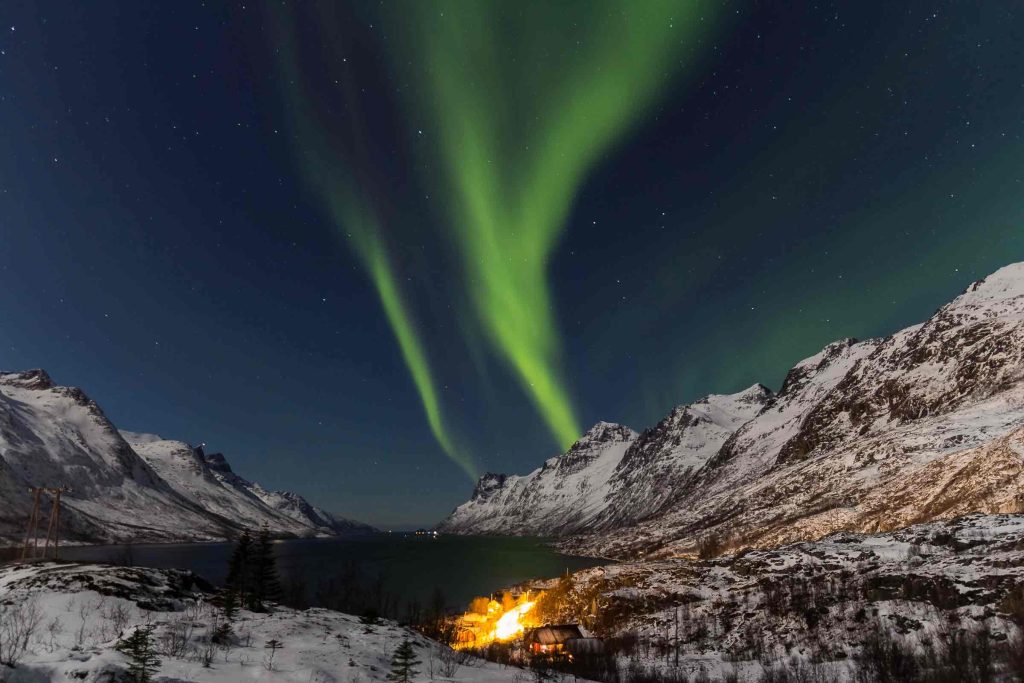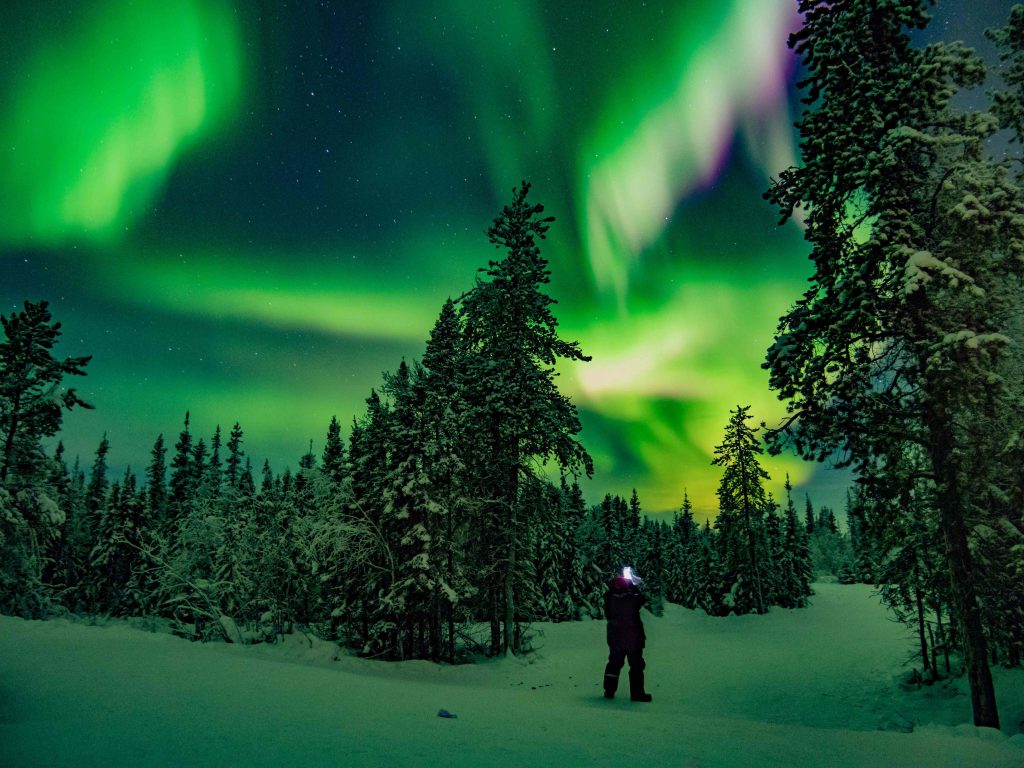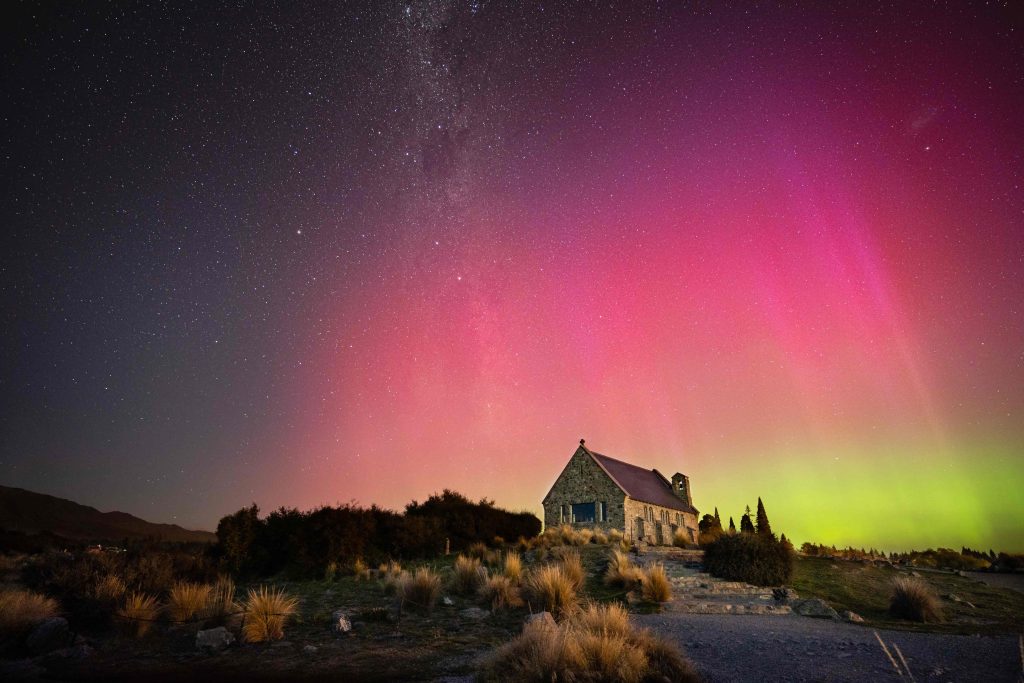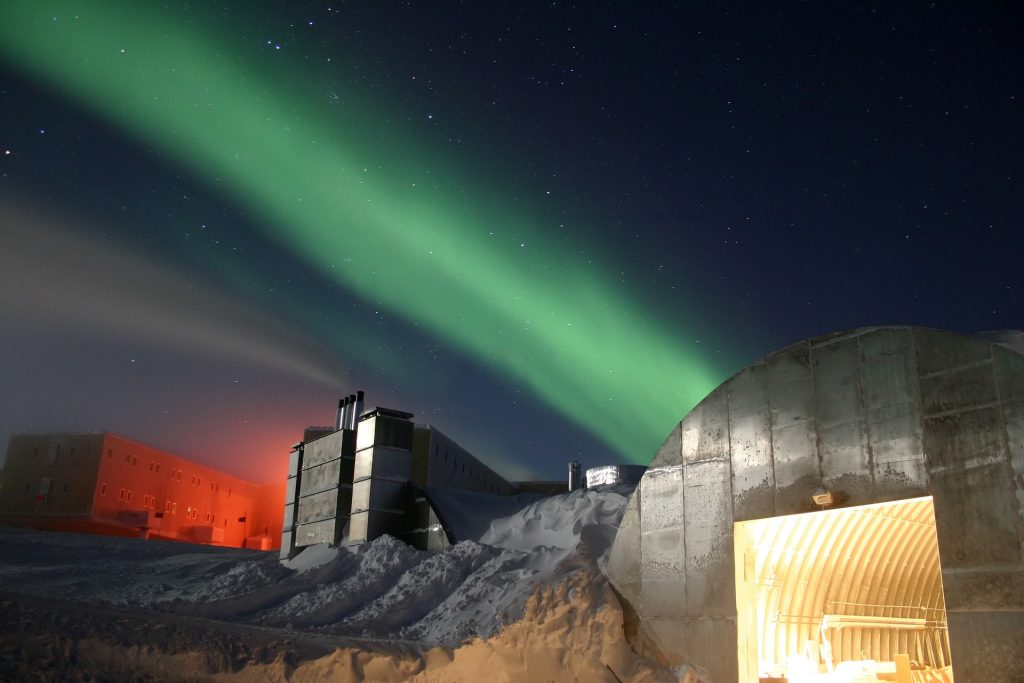Whether you’ve read about the majestic northern lights in books or watched them dance across the night sky in movie scenes, chances are you’ve caught wind of this incredible natural phenomenon also known as aurora borealis. After all, the northern lights have captivated mankind since ancient times, even playing a role in Norse mythology and Inuit legends.
As amazing as the northern lights may be (and believe us, they are) this aurora isn’t the only celestial light display to stoke the imagination. The Southern Hemisphere boasts its own spectacular blaze of glory called the southern lights or aurora australis.
In weighing southern lights vs. northern lights, which is better, aurora borealis or aurora australis?
Our travel guide explains everything you need to know, from southern lights and northern lights differences to the most compelling corners of the earth to witness, or even chase, these elusive, unpredictable auroras in real life. Some vantage points are a world away, while others may be closer to your own backyard.

Is it easier to see the northern lights or the southern lights?
One of the key differences between aurora borealis and aurora australis centers around where each rarity takes place. Northern lights streak across the heavens in remote destinations close to the North Pole, especially those near the Arctic Circle, and far away from cities (where light pollution occludes visibility). Aurora borealis has earned more of a reputation because the light dance is more visible from these expansive prime areas, including Alaska, Canada, Greenland, and the Scandinavian countries of Finland, Greenland, Iceland, Sweden, and Norway, which tops the list.
While southern lights are as good as northern lights, aurora australis occurs in less-accessible places near the South Pole, including Antarctica and Down Under in Australia, Tasmania, an island state of Australia, south of the mainland, and New Zealand. Though fantastic, viewing conditions aren’t as ideal, and given the capriciousness of auroras, it may be more of a gamble than the northern lights.

What causes aurora borealis and aurora australis?
Though rare, auroras are natural interactions that occur when electrically charged solar particles crash into atoms of oxygen and nitrogen from the Earth’s atmosphere. As they travel along the magnetic field between the North Pole and the South Pole, the particles wind up trapped in the Earth’s atmosphere, and when the gasses release energy, voila! The night sky is illuminated by shimmering auroras near the poles, around 60-620 miles (97-1,000 kilometers) above Earth’s surface. The stronger the solar wind, the more intense the auroras.
Northern lights vs. southern lights colors
The fascinating tableau you see also depends on the gasses released into the night sky. Oxygen emits a red or greenish-yellow light. The higher the altitude (about 300 km or 186 mi) the more likely pinks and reds will appear. Nitrogen flashes blue and purple, a less common color story, at different altitudes. The spectral spectacle of southern lights and northern lights may last for mere minutes or several days.
Are you ready to embrace the magic and the mystery of the otherworldly aurora borealis and aurora australis? Here are some of the best places to experience southern lights and northern lights’ brightest colors.
Best places to see the northern lights vs southern lights
Northern lights
- Tromsø, Norway: Norway is lauded as the best place to see the aurora phenomenon. Surrounded by mountain peaks, this charming city, the gateway to the Arctic Circle (where the sun never sets), is known as the “Arctic Capital.”
- Yellowknife, Canada: Canada also ranks as a top sighting spot, with most of its land strategically located under the Auroral Oval, famous for its powerful geomagnetic activity. The jewel in the crown is Yellowknife, in the Northwest Territories, aka the “Aurora Capital of North America.”
- Grótta, Iceland: This nature reserve in the northwestern reaches of Greater Reykjavík features a historic lighthouse surrounded by black sands. There’s minimal pollution, making it a magnet for aurora-gazers.
- Churchill, Canada: Perfectly situated in the Auroral Oval, this small Manitoba town boasts over 300 nights of aurora activity a year, with the strongest showings in February and March. Polar bears also bear witness.
- Aurora Sky Station, Sweden: Getting to this mountaintop perch in the Swedish Lapland is an adventure in itself. From the Abisko National Park board a chairlift that zips you up to the viewing tower.
- Nuuk, Greenland: With little pollution, awe-inspiring mountains and fjords, the capital of Greenland is one of the most scenic spots to observe aurora borealis.

Southern lights
- Eaglehawk Neck, Tasmania: This picturesque coastal town southeast of Hobart, Tasmania’s capital, offers incredible cliffs, a rugged landscape and the chance to spy aurora australis.
- Mount Wellington, Tasmania: Tasmania is considered prime aurora viewing turf, and Mount Wellington offers vistas as far as the eye can see from its 4,100-foot peak.
- South Georgia Island, British Overseas Territory: It’s incredibly challenging to reach this remote sub-Antarctic island in the Southern Ocean, but intrepid adventurers may also be rewarded with a glimpse of humpback whales.
- Cradle Mountain-Lake St Clair National Park, Tasmania: Boasting stupendous mountain scenery, including Cradle Mountain, glacial-carved lakes, wildlife and the Overland Track, a hikers’ nirvana, this national park in the Central Highlands is a premier perch to spot the southern lights.
- Stewart Island, New Zealand: Home to Rakiura National Park, this secluded island in southernmost New Zealand boasts rainforests, beaches and unique birdlife, including the kiwi, a fantastic backdrop for catching the southern lights.
- Ushuaia, Argentina: Known as the “Gateway to Antarctica,” this south-of-the-equator adventure hub is the world’s southernmost city. It’s also much easier to get to than its counterparts, so you may have more luck viewing flighty auroras.

Prime time for southern lights and northern lights
You can catch auroras almost any time of the year, but you’re more likely to see them when the night skies are clear, dark, and cloudless, which means wintertime. For northern lights, that window is August through late February, and for southern lights, March to September, with May offering the most light show potential. Timing your adventure to a new moon, when the sky is its darkest, may work in your favor, too, but remember that pollution, clouds, starlight, and moonlight can also obstruct visibility.

How to take photos of the southern lights and northern lights
Plenty of smartphone apps let you track the Northern Lights in real-time, such as My Aurora Forecast and Aurora Alerts; that said, nothing can replace the expertise of an experienced tour guide.
If your patience pays off, you can also capture the fickle spectacle with smartphone apps including Northern Lights Photo Taker, NightCap Camera and Cortex Camera. (Check out our complete guide to photographing the northern lights with a smartphone here.) If a DSLR camera is more your speed, it’s worthwhile to also bring along a tripod, wide lens and spare batteries.

How to dress for the southern lights vs. northern lights
Once you pinpoint your destination, it’s essential to dress for the elements. Warm clothing is, of course, a no-brainer, especially in the wintertime. Think long johns, layers of fleece or woolen sweaters, warm socks, a waterproof jacket and pants, plus boots that keep your feet toasty in frigid temperatures.
To read our complete guide on how to photograph the northern lights with a smartphone, take a look at this article for more information.


